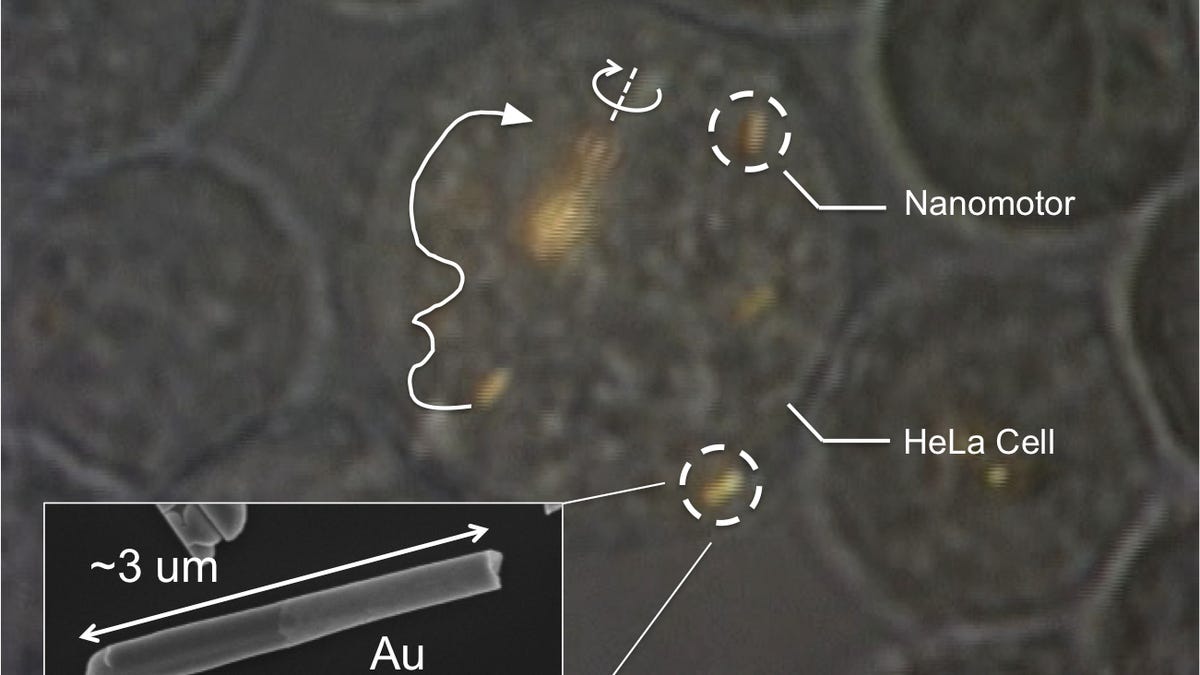Tiny rocket ships drive into human cells, could deliver drugs
Researchers at Penn State University explore the insides of our cells with nano-sized, rocket-shaped metal projectiles powered by sound.

It's a scene worthy of the modern reboot of "Fantastic Voyage." A tiny rocket-shaped projectile breaches the border of a cell wall and begins to work, like an egg beater, to whip up the cell's innards, or puncture its membranous wall with a battering-ram motion.
Although a scene like this might take place in James Cameron's modern retake on the 1966 film classic (if it ever comes out), it's something scientists at Penn State University and Weinberg Medical Physics in Maryland have already witnessed.
In their work, which will appear in the journal Angewandte Chemie International Edition, the researchers developed microscopic metallic motors known as nanomotors and then injected them into living human cells, marking what they say is the first time such an experiment had ever been done.
"Our first-generation motors required toxic fuels and they would not move in biological fluid, so we couldn't study them in human cells," said researcher Tom Mallouk, Evan Pugh Professor of Materials Chemistry and Physics at Penn State. "That limitation was a serious problem."
The scientists overcame that problem when they discovered that the nanomotors could be powered by ultrasonic waves, which make them spin. Because they didn't need to use the toxic fuel anymore, the way was cleared for use in living cells.
The nanomotors measure 3,000 nanometers wide, which means about 33 of them could be stacked end-to-end along the width of a human hair. In addition to using sonic frequencies to spin them, the researchers employed magnetic fields to steer them around inside the cells. They also discovered that different motors could be controlled independently of the others, making them able to do very precise work.
"Autonomous motion might help nanomotors selectively destroy the cells that engulf them," Mallouk said in a statement. "If you want these motors to seek out and destroy cancer cells, for example, it's better to have them move independently. You don't want a whole mass of them going in one direction."
Doing battle with cancerous cells is just one potential application of the research. According to Mallouk, "nanomotors could perform intracellular surgery and deliver drugs non-invasively to living tissues."
Mallouk adds that a future goal in a "Fantastic Voyage"-like world would be to have the nanomotors link up in a network and create an environment "where nanomotors would cruise around inside the body, communicating with each other and performing various kinds of diagnoses and therapy." He adds, "There are lots of applications for controlling particles on this small scale, and understanding how it works is what's driving us."
You can watch the little rocket ships go to work in this video from Penn State.

